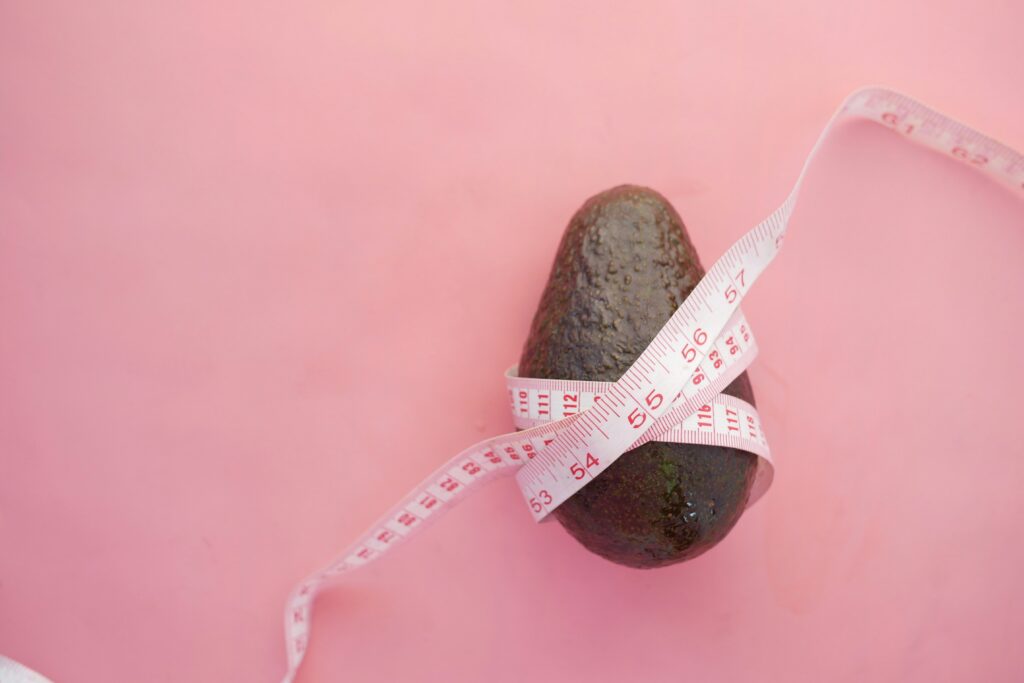Changing your calorie goal in MyFitnessPal can help you stay on track with your health and fitness objectives. Whether you’re aiming to lose weight, build muscle, or maintain your current weight, adjusting your daily calorie intake is essential. Fortunately, MyFitnessPal makes it easy to tweak this setting. In this guide, we’ll show you exactly how to modify your calorie goal within the app to better align with your personal fitness journey. Whether you’re using the mobile app or the website, the process is simple and quick.

Why You Might Want to Change Your Calorie Goal in MyFitnessPal
Adjusting your calorie goal in MyFitnessPal is essential to keeping your health and fitness journey on track. Whether you’re looking to lose weight, gain muscle, or maintain your current weight, your calorie goal plays a key role in achieving your desired results. Here are some reasons why you might need to change your calorie goal:
1. Weight Loss Goals
If your goal is to lose weight, lowering your calorie goal is crucial. MyFitnessPal helps you set a calorie deficit, which means consuming fewer calories than your body needs. As you lose weight, your caloric needs may change, and adjusting your goal ensures that you continue progressing at a healthy pace. Without recalculating your calorie target, you may hit a plateau and stop seeing results.
2. Muscle Gain and Strength Building
For those focused on building muscle, increasing your calorie goal is often necessary. To gain muscle mass, you need to consume more calories than your body burns, leading to a calorie surplus. Adjusting your calorie goal upwards will help you ensure you’re getting enough nutrients to fuel muscle growth and recovery.
3. Maintenance Mode
Once you’ve reached your weight loss or muscle gain goal, maintaining your progress becomes the next priority. Your calorie goal should be adjusted to reflect the number of calories you need to consume in order to sustain your weight. This maintenance calorie goal helps you avoid gaining or losing weight unintentionally, allowing you to focus on maintaining a healthy balance.
4. Lifestyle or Activity Level Changes
Your calorie needs can fluctuate based on changes in your daily activity level. If you’ve become more active by incorporating regular exercise, or if you’ve reduced your activity, adjusting your calorie goal can help you align your intake with your new energy expenditure. Regularly reassessing your goals can help keep you on the right track regardless of life changes.
5. Avoiding Plateaus
As your body adapts to new habits and workouts, you may experience a weight loss plateau. This often happens because your body becomes more efficient at burning calories or because your metabolism adjusts. If you notice your progress slowing down, recalculating your calorie goal can help you break through that plateau and keep moving toward your goals.

How MyFitnessPal Calculates Your Calorie Goal
MyFitnessPal calculates your daily calorie goal based on several factors, including your Basal Metabolic Rate (BMR) and activity level. The BMR is an estimate of how many calories your body needs to perform basic functions like breathing and digesting food, even while at rest. Here’s how it works:
- Personal Information: During the setup, MyFitnessPal asks for details like your age, height, weight, and gender. This information helps the app estimate your BMR using the Mifflin-St Jeor equation, which is considered one of the most accurate methods.
- Activity Level: MyFitnessPal also takes into account your daily activity level whether you lead a sedentary, lightly active, moderately active, or very active lifestyle. The more active you are, the higher your calorie needs will be.
- Goals: Based on whether you want to lose weight, maintain weight, or gain weight, the app adjusts your calorie target. For weight loss, MyFitnessPal creates a calorie deficit, while for weight gain, it sets a surplus.
By combining all these factors, MyFitnessPal provides a tailored calorie goal to help you reach your specific fitness and health objectives. As you log your progress and make changes to your weight or activity levels, your calorie goal can be recalculated to ensure you’re on track.
Step-by-Step Guide: How to Change Your Calorie Goal in MyFitnessPal
Adjusting your calorie goal in MyFitnessPal is a straightforward process that helps you stay on track with your health and fitness objectives. You can either recalculate your goal by updating your weight or directly set a custom calorie target. Depending on whether you’re using the website or mobile app, here are the steps to change your calorie target.
For Website Users:
Follow these steps to update your calorie goal on the MyFitnessPal website:
- Log in to MyFitnessPal.com with your credentials.
- Click on “My Home” in the top navigation bar.
- Select “Goals” from the dropdown menu.
- Click on the “View Guided Setup” button at the top of the page.
- Update your profile by ensuring your “Current Weight” is correct.
- Click “Update Profile” to recalculate your calorie goal based on your current weight.
For Mobile App Users (iOS and Android):
To change your calorie goal using the MyFitnessPal mobile app, follow these steps:
- Open the MyFitnessPal app on your smartphone.
- Go to the “More” tab (iOS) or “Menu” tab (Android).
- Tap on “Goals.”
- Change your “Current Weight” to a higher or lower number, then save the change.
- Immediately change it back to your correct weight.
- The app will recalculate your calorie goal based on the updated weight.
Tips for Adjusting Your Calorie Goal:
- Regularly update your progress by recalculating your calorie goal after significant weight changes or changes in activity levels.
- Monitor your progress to ensure your calorie goal is in line with your health objectives.
By following these steps, you can easily adjust your calorie goal in MyFitnessPal and stay on track with your fitness journey.
When Does MyFitnessPal Recalculate Your Calorie Goal?
MyFitnessPal automatically recalculates your calorie goal at certain times, ensuring that your daily intake remains aligned with your current fitness progress. Here are the key scenarios when MyFitnessPal will recalculate your calorie goal:
After Losing Weight (Every 10 Pounds)
When you log a weight loss of 10 pounds, MyFitnessPal will prompt you to recalculate your calorie goal. This adjustment ensures that your calorie needs are updated based on your new weight, helping you continue progressing toward your goals without hitting a plateau.
When You Update Your Weight Manually
If you change your weight manually within the app or website (for example, if you forget to log a recent weight update), MyFitnessPal will automatically recalculate your calorie goal based on the new weight. This ensures your calorie target stays in sync with your progress.
When You Adjust Your Activity Level
If your activity level changes whether you start exercising more or reduce your activity – MyFitnessPal may also recalculate your calorie goal. Your calorie needs are influenced by how active you are, so it’s important to keep this information up-to-date.
When You Switch Your Weight Goals
If you decide to change your fitness goal such as switching from weight loss to weight maintenance or muscle gain – MyFitnessPal will recalculate your calorie goal accordingly. This helps you set a new target that aligns with your updated health objectives.
Manual Recalculation
If you miss any of the automatic recalculation prompts or simply want to adjust your calorie goal at any time, you can manually update it by following the steps to change your calorie target through the app or website.

Try a Different Approach to Calorie Counting with ReciMe
At ReciMe, we believe that healthy eating should be both simple and enjoyable. If you’re tired of the traditional methods of calorie counting, our app offers a unique alternative by focusing on recipes rather than individual food items. While most calorie-tracking apps focus on logging each food you eat, ReciMe gives you the power to save and organize your favorite recipes from platforms like Instagram, TikTok, Pinterest, YouTube, and even photos. With ReciMe, you can track the calories in your meals by automatically calculating the nutritional information for each saved recipe.
ReciMe provides an intuitive way to approach meal planning without the hassle of manually tracking every ingredient. Once you’ve saved your recipes, the app calculates the calories, macronutrients, and more, so you can easily stay on top of your nutrition. Whether you’re looking to lose weight, gain muscle, or simply eat healthier, ReciMe gives you all the tools you need to plan meals that match your nutritional goals – without the stress of counting every calorie one by one.
- Free and Premium Versions: The free version allows you to save up to 8 recipes, while the Premium version offers unlimited recipe saves and advanced meal planning features.
- Recipe Nutritional Insights: ReciMe automatically calculates the calories and macronutrients for your saved recipes, making it easy to understand the nutritional value of what you’re eating.
- Meal Planning: Plan your weekly meals based on your preferred recipes and nutritional goals.
- Smart Grocery Lists: ReciMe generates grocery lists organized by supermarket aisle or recipe to streamline your shopping experience.
- Platform Availability: ReciMe is available on iOS and also offers a Chrome extension for quicker recipe saving. An Android version is in development, and users can join the waitlist for early access.
ReciMe provides a fresh, recipe-centered approach to calorie tracking that takes the guesswork out of your meals. It’s an easy-to-use, flexible tool for those who want to focus on meal planning rather than traditional calorie counting.
Just try it – you’ll love it:



How to Stay Motivated When Adjusting Your Calorie Goal
Staying motivated while adjusting your calorie goal in MyFitnessPal can be challenging, especially when progress seems slow or your goals change. One effective strategy is to set small, achievable milestones that keep you focused on immediate wins rather than long-term results. For example, aim for a weekly calorie target or celebrate small victories like hitting your calorie goal consistently for a few days. This way, you’re always making progress, and each achievement serves as a reminder that you’re on the right path.
Another key to staying motivated is tracking your non-scale victories. These could include improvements in energy levels, better sleep, or noticing changes in how your clothes fit. These successes can be just as meaningful as the numbers on the scale and can keep you motivated when you’re adjusting your calorie goal. Remember, the journey to your fitness goals is not just about hitting a number, but about building healthy habits and enjoying the process.
Conclusion
Adjusting your calorie goal in MyFitnessPal is a simple but crucial step in ensuring that you stay aligned with your health and fitness objectives. Whether you’re looking to lose weight, gain muscle, or maintain your current weight, customizing your calorie intake helps you reach your goals more efficiently. By understanding how MyFitnessPal calculates your calorie needs and regularly updating your progress, you can continue making meaningful strides toward your fitness journey.
Additionally, combining MyFitnessPal with meal planning tools like ReciMe can make the process even smoother, allowing you to create balanced meals that fit your goals effortlessly. Stay consistent, keep adjusting when needed, and you’ll be well on your way to success.
FAQ
1. How do I change my calorie goal in MyFitnessPal?
To change your calorie goal, log into MyFitnessPal (via the website or app), go to the “Goals” section, and adjust your current weight or activity level. The app will automatically recalculate your calorie target based on the changes you make.
2. Why is my calorie goal recalculated automatically?
MyFitnessPal recalculates your calorie goal when you log a weight change of 10 pounds or more or if your activity level changes. This ensures your calorie intake is aligned with your current fitness progress and goals.
3. How often should I adjust my calorie goal?
You should adjust your calorie goal whenever you experience significant weight changes, switch between weight loss, maintenance, or muscle gain goals, or if your activity level increases or decreases. Regular adjustments help ensure continued progress.
4. Can I manually recalculate my calorie goal if I missed the automatic update
Yes, you can manually recalculate your calorie goal at any time by following the steps in the “Goals” section. This ensures your calorie target stays accurate even if you miss the automatic recalculation prompts.
